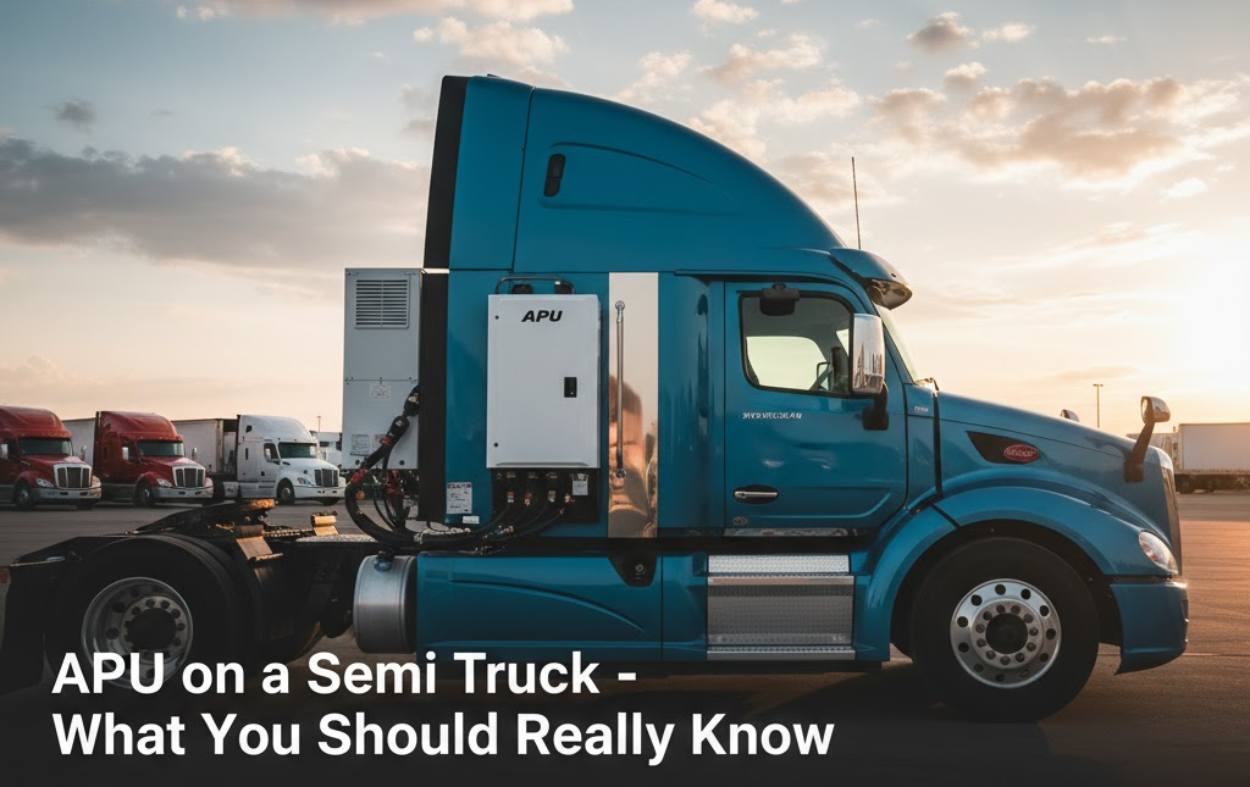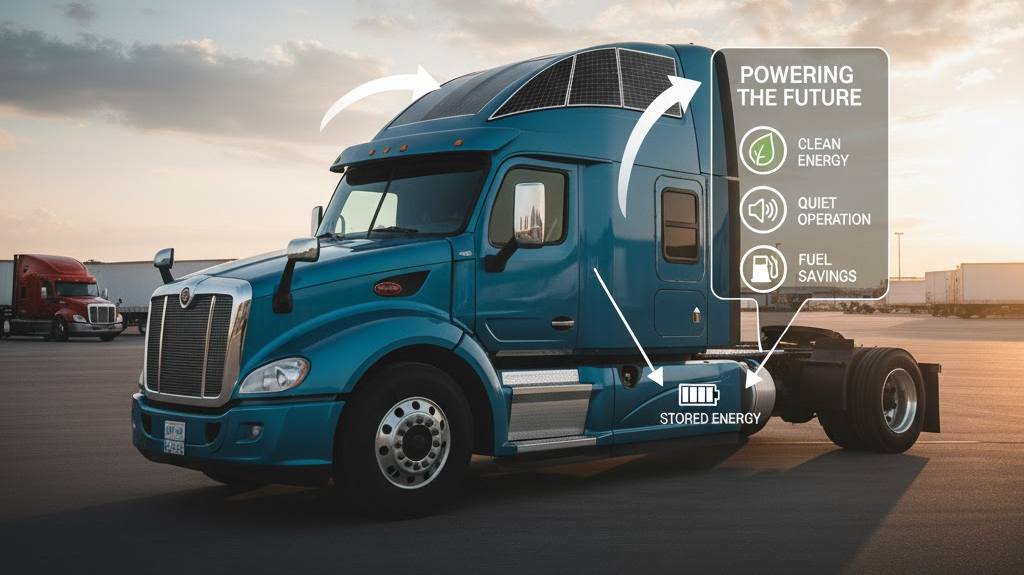APU on a Semi Truck – What You Should Really Know

If you run a fleet or even drive your own semi, you already know what matters most: keeping your truck powered, comfortable, and efficient when the engine’s off.
That’s where the APU on a semi truck comes in.
An APU (Auxiliary Power Unit) has been the old faithful for years. It keeps your air conditioning running, your electronics alive, and your sleeper cool or warm – all while the engine rests. Sounds good. Well, yes… but also not always.
Like everything mechanical, an APU on a semi-truck has its downsides, big ones. And if you’re in management or responsible for fleet decisions, you should be aware of these before investing more in them.
What an APU Actually Does
A traditional semi-truck APU is essentially a small diesel engine. It powers cabin systems when the truck engine is off. No idling, less main-engine wear, and you get comfort and power on breaks.
But here’s the deal: that small engine still burns fuel around 0.2 to 0.5 gallons per hour. If you multiply that across hundreds of trucks or even long resting hours, that’s a lot of fuel burned just for staying parked.
And that’s not even counting maintenance.
Real Cost Behind the Convenience
Let’s break it down:
- Fuel Cost: The APU is supposed to save you fuel from idling – but it still burns plenty of its own.
- Maintenance: It’s another engine. Oil changes. Filters. Repairs. It all adds up.
- Emissions: Every hour your APU runs, it adds to your CO₂ footprint. For fleets trying to hit sustainability targets, that’s a headache.
- Noise: Drivers know this one – it hums all night. And that hum isn’t peace.
- Installation Time: Getting an APU fitted isn’t a 30-minute job. It takes structure, space, and cost.
So, while it’s a necessity in many ways, it’s no longer a perfect fix, especially when better options are emerging.
So What’s the Alternative?

A new shift is underway – fleets are beginning to adopt solar panels for their semi-trucks.
Instead of running another diesel engine, these systems capture energy from the sun.
- It’s quiet.
- It’s clean.
- And it’s starting to save real money.
Imagine this: flexible, lightweight solar panels sitting on top of your truck.
No drilling, no heavy setup, no noise.
They do their job – day after day.
That’s the beauty of the new system replacing the traditional APU on a semi truck.
Installation takes only a few hours, and you don’t need to modify your structure or workflow. The panels continue to charge during the day, and the stored energy powers your HVAC, fridge, lights, or lift gates when parked. No diesel. No noise. No smell.
Why Fleet Operators Are Paying Attention
If you manage a fleet, you already think in terms of ROI. Here’s what switching or even supplementing your APU on a semi truck with solar power looks like:
- Lower Fuel Spend: You can easily save between 3% to 8% fuel per truck. Multiply that by 100 vehicles, and you see the difference.
- Less Maintenance: No small engines to service, no filters, no oil.
- Fast Installation: Panels are mounted on the roof within two hours, typically. No drilling, no chassis work.
- Long-Term ROI: In roughly a year, you cover your costs—and keep saving.
- Better Battery Life: Solar systems keep your batteries charged and protected from deep discharge.
- Greener Fleet: Fewer emissions and a cleaner brand image – that’s something you can show in reports and marketing, both.
Now, this doesn’t mean diesel APUs are dead. They still have their use. But you can’t ignore how fast the technology around them is evolving.
When You Should Consider Alternatives
If you’re constantly running your APU on a semi truck to keep systems on, you’re burning profits.
If your fleet is pushing toward eco goals, you’re hurting your own targets.
If your maintenance list continues to grow, it’s time to reassess your setup.
Modern solutions aren’t about replacing everything overnight. They’re about balance, using solar for daily needs and keeping your APU as backup, not the primary source. That’s how you save fuel, extend battery life, and make your trucks more efficient.
What This Means for Fleet Managers and Owners
At the end of the day, your trucks are your business. Every drop of diesel, every repair, every breakdown – that’s money.
You don’t want systems that quietly drain your profit. You want more intelligent systems that earn their place.
So, if you haven’t looked beyond your APU on a semi truck, it’s time. Check how your fleet could handle partial solar integration or energy-efficient alternatives, not as a gimmick, but as a long-term solution.
Because the next generation of power systems isn’t loud or smoky – it’s clean, silent, and built to last.
That’s how modern trucking is changing.
Not louder. Not dirtier.
Just smarter, quieter, and better for your bottom line.
FAQs
I already have an APU. Should I still think about switching?
Yes, because even if your APU works fine, adding solar support reduces its workload. You’ll use less fuel, need fewer repairs, and save over time. It’s not about replacing; it’s about upgrading smartly.
Will solar power even work when I’m not driving much?
Good question, and yes. The panels charge even when you’re parked in daylight. They store enough power to run your cabin systems quietly through the night.
What if my routes don’t get much sun, or I run heavy equipment?
Then you can mix systems. Keep your APU on a semi-truck for backup and use solar power for lighter loads. You’ll still cut costs and extend the life of your APU.
